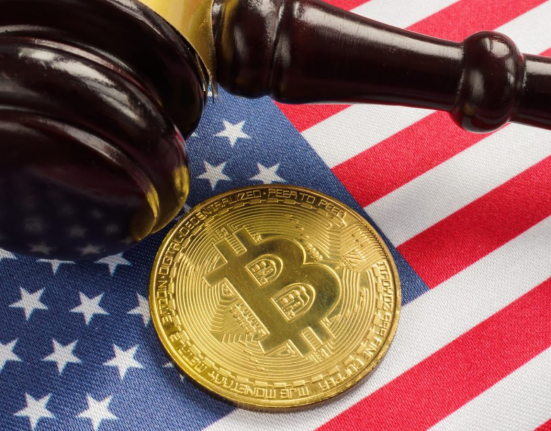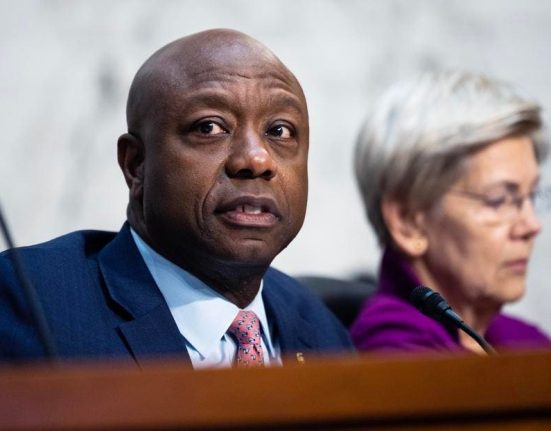WASHINGTON, DC – (L-R) Brian Moynihan, Chairman and CEO of Bank of America; Jamie Dimon, Chairman … More
As the United States takes a historic step toward regulating digital assets, major banks are reevaluating their strategies for staying relevant in an increasingly crypto-driven economy.
The Guiding and Establishing National Innovation for U.S. Stablecoins, known as the GENIUS Act, which was signed into law on July 18, 2025, by President Donald Trump, establishes the country’s first federal framework for payment stablecoins. For traditional financial institutions, the new law could be a green light or a wake-up call.
From stablecoin development to crypto-collateralized loans, legacy banks are now under pressure to modernize their offerings or risk losing ground to digital-first competitors. But with regulatory clarity emerging only now, some institutions may be late to the game.
“President Trump was crystal clear on the campaign trail: under his leadership, the United States will be the crypto capital of the world,” said Sen. Tim Scott, R-S.C., chairman of the Senate Banking Committee. “With his signature on the GENIUS Act, we’ve made history and have delivered important regulatory clarity for the stablecoin industry.”
GENIUS Act: A Landmark Shift For Digital Assets
The GENIUS Act passed both chambers of Congress with bipartisan support following months of debate and over 40 proposed amendments. The bill, spearheaded by Sens. Bill Hagerty, R-Tenn.; Cynthia Lummis, R-Wyo.; Kirsten Gillibrand, D-N.Y.; and Angela Alsobrooks, D-Md., lays the foundation for how payment stablecoins can be issued, managed, and regulated in the United States.
Stablecoins have grown into a multibillion-dollar sector used by traders, businesses, and cross-border payment providers. Until now, they operated in a largely unregulated environment, prompting concerns about consumer protection, systemic risk, and monetary policy implications.
Under the new law, stablecoin issuers are required to maintain 100% reserve backing, undergo regular audits, and register with the relevant regulatory authorities. The law also prohibits algorithmic stablecoins that are not backed by tangible assets, addressing recent high-profile collapses that have shaken confidence in the space.
Senator Scott, who made digital asset oversight a priority upon assuming leadership of the Senate Banking Committee, said the bill was the result of months of bipartisan negotiation and input from legal experts, industry stakeholders, and regulators.
“This legislation will support working families, small businesses, and communities across America with faster, cheaper, and more accessible payments,” Scott said. “It will also solidify the U.S. dollar’s dominance across the world.”
Banks Begin To Engage With Crypto
Following the bill’s passage, U.S. banks are beginning to take action.
JPMorgan Chase is reportedly developing a new product that would offer loans backed by clients’ cryptocurrency holdings, including Bitcoin and Ethereum. The product could launch as early as next year, according to the Financial Times.
The move signals a broader shift within JPMorgan, whose CEO, Jamie Dimon, has been one of Wall Street’s most vocal critics of Bitcoin.
Other large banks are going a step further. Bank of America CEO Brian Moynihan stated the firm is actively working on launching a stablecoin, though no timeline has been announced.
Citigroup is also signaling interest. CEO Jane Fraser confirmed that the bank is exploring the issuance of a Citi stablecoin to facilitate faster and more secure digital payments.
TradFi Playing Catch-Up In A Tokenized World
For years, traditional financial institutions were slow to engage with digital assets, often citing unclear regulations and reputational risks. Some even closed accounts linked to crypto businesses or blocked crypto transactions outright.
The regulatory environment is shifting rapidly. In addition to the GENIUS Act, Congress is debating the Digital Asset Market CLARITY Act, known simply as the CLARITY Act, which passed the House last week with broad bipartisan support.
A Senate draft, released by Chairman Scott and Senators Lummis, Hagerty, and Bernie Moreno, proposes further guardrails and designates the roles of the SEC and CFTC in overseeing different classes of digital assets.
The draft aims to clarify how tokens are classified, whether as securities or commodities, and calls on the SEC to “tailor existing requirements to digital asset activity.”
For banks, this means that regulatory ambiguity is no longer an excuse for inaction.
Chris Dixon, founder and managing partner at a16z crypto, said of the CLARITY Act: “This bill protects consumers, supports builders and investors, and keeps crypto innovation in the U.S. Now we need it on the House floor and moving to the Senate. Let’s get it done.”
Can Banks Catch Up? Stablecoin Growth And The GENIUS Act Raise Stakes
The shift presents a strategic decision for banks. They must decide whether to compete with existing stablecoin providers, such as Circle and Tether, or integrate existing stablecoins into their financial services.
Visa reports that adjusted stablecoin transaction volume has grown 58% over the past year, while the number of transactions has increased by 35% as of August 2024. Much of that activity is concentrated on centralized exchanges, which account for 41% of stablecoin volume and 24% of transaction count.
These tokens are already deeply embedded in decentralized finance (DeFi), international remittances, and institutional liquidity operations.
The GENIUS Act’s requirements for transparency, reserve audits, and federal registration could create an opportunity for banks to compete on trust and compliance, areas where traditional institutions already have an edge.
But the challenge is timing. Fintech firms and crypto-native companies have moved fast, partnering with global exchanges, wallet providers, and payment processors. The longer banks wait to launch products, the greater the risk that network effects lock in other providers.
As Crypto Policy Advances, Banks Face Challenges
Despite the GENIUS Act’s passage, not all questions have been answered. Banks still face uncertainty on how digital assets will be taxed, how custody services will be regulated, and how their stablecoins will interact with future central bank digital currencies (CBDCs) that may emerge from the Federal Reserve or other monetary authorities.
Nevertheless, the political landscape has undergone significant changes. President Trump championed the GENIUS Act as a way to make the U.S. “the crypto capital of the world,” and bipartisan cooperation on digital asset regulation appears to be growing.
Bottom Line: It’s Now Or Never For Banks
The GENIUS Act is a milestone in digital asset policy in the United States, creating a new opportunity for traditional banks to compete in the stablecoin market. With legal clarity emerging and bipartisan support in Washington, institutions such as JPMorgan, Bank of America, and Citigroup are now exploring how to integrate crypto products into their offerings.
Whether these efforts will be sufficient remains to be seen. However, the message from lawmakers is clear. The digital dollar era has begun, and financial institutions that move first may gain a significant advantage.








